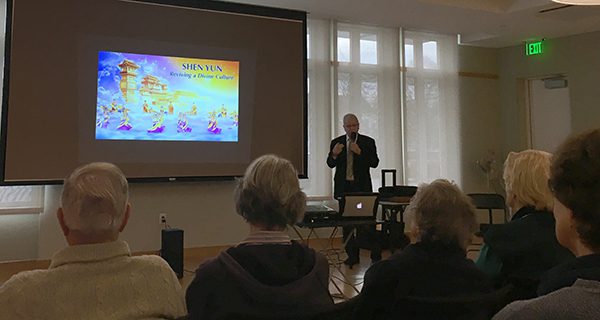[ccfic caption-text format="plaintext"]
By Katrina Margolis
Hometown Weekly Reporter
Most of us learn extensively about the history of the United States, as well as the history of Europe. However, many of the cultures to the East remain a mystery. There may be a smattering of information here and there, but many of us are not afforded the same in-depth understanding of these histories and cultures as with Western ones. This past Tuesday at the Needham Council on Aging, a volunteer named Bob sought to change this - at least a little bit - with a presentation on the history of traditional Chinese Culture titled “The Heart and Soul of China.”
The presentation went in chronological order, ending with a story with which many are familiar: the Communist revolution in 1949. “In 1949, everything changed with the Communist revolution.
From 1966 to 1976, the goal was to replace traditional Chinese culture with the party culture, which was based in atheism and class struggle,” Bob explained. Ninety percent of the temples and monasteries were completely destroyed. The Communist party was trying not only to smash the monuments, but smash the spirit of the people themselves.”
The traditional culture Bob speaks of begins with the Yellow Emperor, or Huang Di. “The Yellow Emperor is considered to be the father of Chinese Culture. He’s credited with improving the livelihood of many people. He taught them how to be civilized and he is noted for his many inventions,” Bob explained. “These include the compass, the chariot, the wheelbarrow, the bow and arrow, early Chinese astronomy and even the Chinese calendar. His wife is supposed to be the one who invented soap.” Early China was very concerned with the principles of harmony and oneness between heaven and earth. Bob further explained these through the three main Chinese religions, Taoism, Buddhism, and Confucianism.
“Taoism seeks the truth in any endeavor. Taoist thought is probably as old as Chinese history itself, but it wasn’t until 500 BC than it was institutionalized,” Bob said. “Confucianism taught the five common virtues of benevolence, righteousness, propriety, wisdom and faithfulness. These were practiced quite widely throughout Chinese society.” Continuing on to Buddhism, Bob explained, “Buddhism arrived in China around 67 AD. It had an immense focus on meditation, compassion for all human beings, and personal salvation through self-conservation.”
The binding reason for all of this information was the creation of the Shen Yun Dance Troop in 2006. Bob explained that the Communist Era was a particularly dark one for China. “However, outside of China, the tide is turning and the traditional values and virtues of Chinese history are being revived,” he said. “In 2006, a group of overseas Chinese artists came together and they wanted to revive the spirit of the culture, and this was for the whole world to enjoy. Being artists, they thought the best way to accomplish this mission was through dance and music.”
This group is the Shen Yun Performing Company, who are coming to Boston in March. Their main focus is traditional Chinese dance and music, and to teach the world about a culture that otherwise may remain hidden.






















